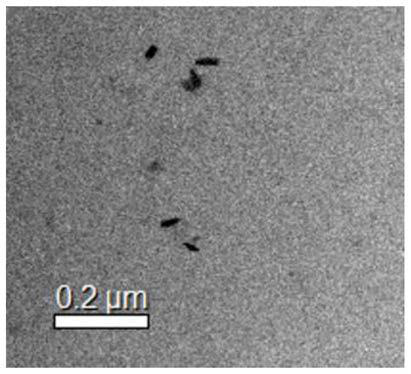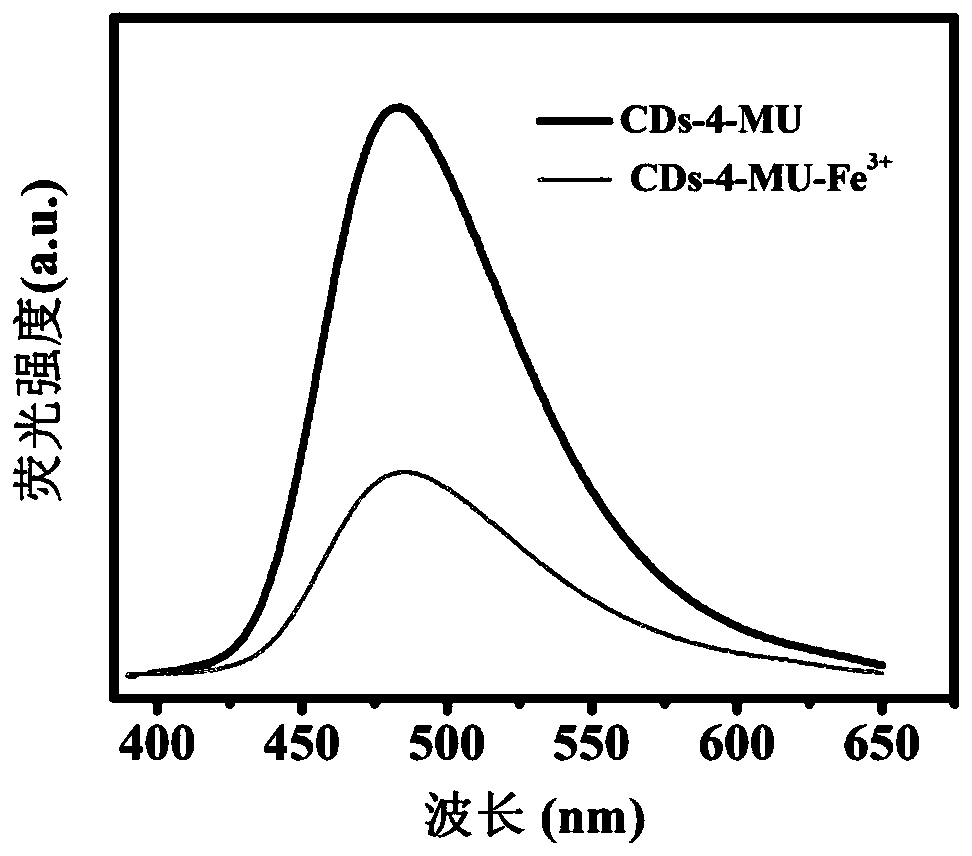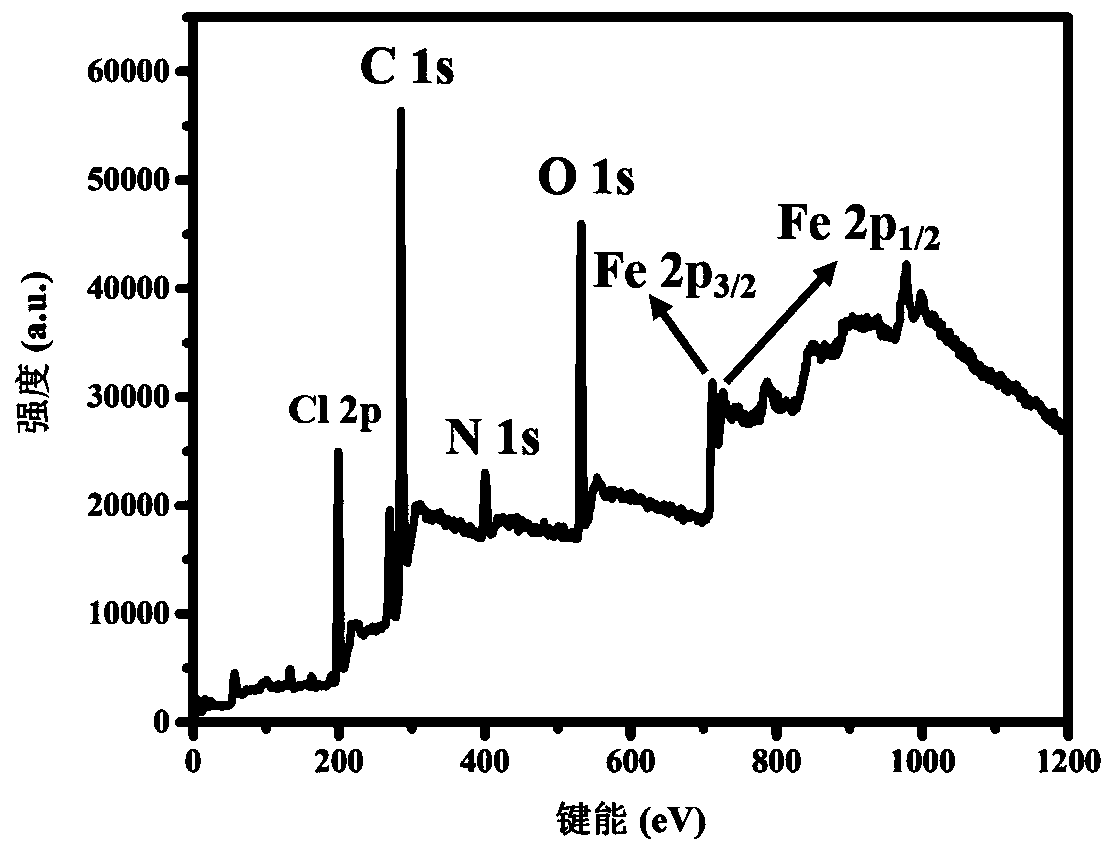Novel nano-composite, preparation method thereof and application of novel nano-composite in sewage detection
A nanocomposite, a new type of technology, applied in chemical instruments and methods, measuring devices, fluorescence/phosphorescence, etc., can solve the problems of detection sensitivity and accuracy limitations
- Summary
- Abstract
- Description
- Claims
- Application Information
AI Technical Summary
Problems solved by technology
Method used
Image
Examples
Embodiment 1
[0028] Embodiment 1 The preparation of the carbon quantum that emits yellow fluorescence
[0029] Mix the amino acid, methylumbelliferone and water evenly under stirring. Among them, the amino acid is D-arginine (Arg), and the methylumbelliferone is 4-methylumbelliferone (4-MU). The feeding molar ratio of the two is 1:1, and the total substance amount is 0.5 mmol. Then add 10mL of water, mix uniformly in the hydrothermal reaction kettle, and react at 180°C for 12h under hydrothermal conditions, wherein D-arginine forms carbon quantum dots (CDs) under hydrothermal conditions, and further reacts with 4-MU Luminescent nanoparticles (denoted as CDs-4-MU) were formed. After the reaction, the obtained product was first centrifuged (10000rpm, 5min), then the supernatant was taken into a dialysis bag (MWCO=200Da), dialyzed for 2h, and finally freeze-dried to obtain luminescent nanoparticles, named CDs-4-MU . Then CDs-4-MU was formulated into a solution with a concentration of 0.05...
Embodiment 2
[0030] Embodiment 2 The preparation of the carbon quantum that emits yellow fluorescence
[0031] Mix the amino acid, methylumbelliferone and water evenly under stirring. Among them, the amino acid is D-tryptophan, and the methylumbelliferone is 3,4-dimethylumbelliferone. The feeding molar ratio of the two is 1:1, and the total substance amount is 0.5 mmol. Then add 10mL of water, mix evenly in the hydrothermal reaction kettle, and react at 180°C for 12h under hydrothermal conditions, wherein tryptophan forms carbon quantum dots (CDs) under hydrothermal conditions, and reacts with 3,4-dimethyl Umbelliferone further forms luminescent nanoparticles. After the reaction, the obtained product was first centrifuged (10000rpm, 5min), then the supernatant was placed in a dialysis bag (MWCO=200Da), dialyzed for 2h, and finally freeze-dried to obtain luminescent nanoparticles, and then the nanoparticles were prepared into a concentration For a solution of 0.05mg / mL, take 0.25mL of a ...
Embodiment 3
[0032] Example 3 TEM Characterization of Nanoparticles Emitting Blue Fluorescence
[0033] The luminescent nanoparticle CDs-4-MU synthesized in Example 1 was freeze-dried and dispersed into water (nanoparticle concentration: 0.5 mg / mL), ultrasonicated for 30 min, and then a drop was dropped onto the copper grid with a dropper, and the copper grid was After drying, observe the morphology of the carbon quantum dots under a transmission electron microscope. figure 1 It is the transmission electron microscope figure of the synthesized luminescent nanoparticle CDs-4-MU in embodiment 1, by figure 1 It can be seen that the synthesized luminescent nanoparticles present a uniform shuttle-shaped structure, which proves that the luminescent nanoparticles have been successfully synthesized.
PUM
 Login to View More
Login to View More Abstract
Description
Claims
Application Information
 Login to View More
Login to View More - R&D
- Intellectual Property
- Life Sciences
- Materials
- Tech Scout
- Unparalleled Data Quality
- Higher Quality Content
- 60% Fewer Hallucinations
Browse by: Latest US Patents, China's latest patents, Technical Efficacy Thesaurus, Application Domain, Technology Topic, Popular Technical Reports.
© 2025 PatSnap. All rights reserved.Legal|Privacy policy|Modern Slavery Act Transparency Statement|Sitemap|About US| Contact US: help@patsnap.com



